Specialist
The Evelina Hospital for Sick Children was founded by Baron Ferdinand James Anselm de Rothschild (1839-1898) following the death of his wife Evelina in 1866, who had gone into premature labour following a railway accident. Their son was stillborn.
The Baron purchased a site, South Sea Court, in Southwark, one of the poorest areas in London, where many children died of infectious diseases and malnourishment.
The Hospital opened in June 1869. Because the site was small and irregularly shaped, the 4-storey building was limited in size. Built to accommodate 100 patients, the Hospital initially contained only 30 beds, for which the Baron bore the cost of maintenance.
Designed as a 'model' hospital, it provided up-to-date child care facilities. The ground floor contained offices, the Board Room and accommodation for the Matron and the medical staff. Two floors were devoted to the wards and the top floor contained dormitories for the nurses and servants, as well as a small quarantine ward. The kitchens and more offices were located in the extensive basement area. There was a separate kitchen for the preparation of food for Jewish patients. Various outbuildings contained the wash-house, a disinfecting oven and a post-mortem room. A detached wing held the dispensary and the Out-Patients Department.
The wards ran the length of the building - 100 ft (30 metres) long by 24 ft (7.2 m) wide, and 14 ft (4.2 m) high. A corridor ran between the outside wall and the ward-side wall, both of which had a double row of windows. Each ward had four fireplaces, so that the space could be sectioned off into smaller rooms if needed. At one end of the ward was a small ward set apart for Jewish children; at its other end was a play room, beyond which lay two large rooms - one for patients with whooping cough and the other for infants under a year old. (This was exceptional at the time as most hospitals did not admit children under the age of 2 years because it was considered undesirable to separate them from their mothers. They were usually seen as out-patients. The East London Hospital for Children was the first to admit all children up to the age of 12 years.) Most of the children admitted were suffering from infections (particularly whooping cough) and lung diseases such as pneumonia, bronchitis and tuberculosis. The death rate remained high, mainly due to the too often moribund state of the babies admitted.During its second year, the Hospital began to charge 1d (0.4 p) for each bottle of medicine, and began to recruit trainee nurses. In 1871 a subscription scheme was set up. With the support of the public by subscriptions and donations, the number of cots was increased to 40 in 1872 and to 56 by 1875.
In 1892 Baron de Rothschild decided that the Hospital should become a public institution and the Committee of Management was enlarged to 18 Governors. The Baron remained President of the Committee, taking a close interest in the Hospital, until his death in 1898.
In 1903 an extra floor was added to the building. A new wing was built in 1907. It was the only children's hospital to have no balconies for open air treatment of lung conditions, such as pneumonia and tuberculosis.
Building works began for a new Hospital and Out-Patients Department in 1939, but were postponed because of the outbreak of WW2.
The Hospital closed during the war, becoming a First Aid Post. The building received bomb damage in 1940, 1941 and 1944.
In 1947 the Hospital amalgamated with the Children's Unit at Guy's Hospital, and joined the NHS in 1948. In 1949 a school opened in the Hospital, one of the first of its kind in London.
In 1976 the Hospital closed with 76 beds. Services were transferred to the 9th, 10th and 11th floors of the newly built Guy's Tower.
Present status (December 2007)
The Hospital was demolished. The site is now the Mint Street Park, a local play space and venue for community events.
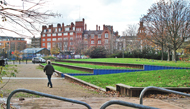
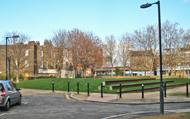
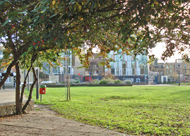
Mint Street Park.
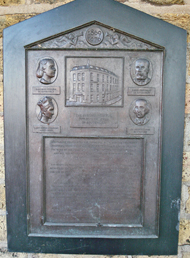
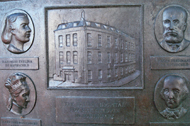
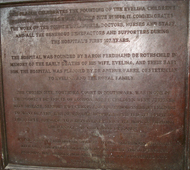
A plaque mounted on a nearby wall explains the history of the Hospital.
Various items from the Hospital are on display in the Old Operating Theatre, Museum and Herb Garret.
Evans PR 1970 A hundred years of children's hospitals: the centenary of the Evelina Hospital for Sick Children. Proceedings of the Royal Society of Medicine 63, 8-10.
Smith M, Sakula A 1994 Hospital Names. London, RSM Press.
http://en.wikipedia.org
http://himetop.wikidot.com
http://webarchive.org
www.aim25.ac.uk
www.eascaffolding.co.uk
www.guysandstthomas.nhs.uk
www.harveynash.com
www.hharp.org (1)
www.hharp.org (2)
www.hharp.org (3)
www.kingscollections.org
www.londonremembers.com
www.thegarret.org.uk
www.waymarking.com
Return to home page